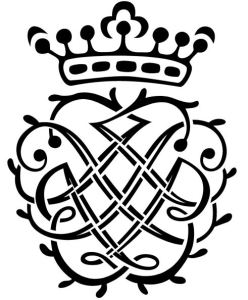Parthenia Nova
Richards, Fowkes & Co Opus 18 organ: St George’s Hanover Square
Simon Thomas Jacobs
Fugue State Records FSRCD009. 77’40

The 2012 opening of the new organ in St George’s Hanover Square was an important event in the London organ world. The church itself has a strong musical identity, not least by being Handel’s own parish church when he lived a couple of streets away. It was the first organ in London by any American organ builder, in this case Richards, Fowkes & Co. Despite some concessions to present day Church of England use, it is at heart a relatively uncompromising take on the 16th and 17th century organs on North Europe, the specialism of the organ builders. It is housed in a case spread across the west end of the church gallery. The central portion of the case is an historically important 18th century one, although nothing remains of the organ that it originally contained.
 This is the first recording of the organ, and also the recording debut of Simon Thomas Jacobs, winner of the first and audience prizes at the 2013 St Albans International Organ Festival. He was trained in the UK, but now lives in America. As befits the first recording of an organ, the CD includes a wide range of music from the 16th to the 21st centuries, including three first recordings of contemporary compositions.
This is the first recording of the organ, and also the recording debut of Simon Thomas Jacobs, winner of the first and audience prizes at the 2013 St Albans International Organ Festival. He was trained in the UK, but now lives in America. As befits the first recording of an organ, the CD includes a wide range of music from the 16th to the 21st centuries, including three first recordings of contemporary compositions.
The registrations are given for all the ‘early’ pieces. They do seem to have been chosen to demonstrate the wide variety of available organ colours, rather to necessarily give a reasonably ‘authentic’ performance of the pieces as the composer might have intended. Three of these pieces cover no fewer than 31 changes of registration. For example, there are ten changes of registration in Sweelinck’s Ricercar del nono tono, a piece than many would contend should be played without any change of timbre. That said, Jacobs blends the manual and registration changes into the texture well, giving a seamless projection of the movement of the piece, which is, after all, in several relatively distinct sections.

Of the early pieces, the magisterial Praembulum Primi Toni by the extraordinary Hamburg organist composer Matthias Weckmann shows the heart of the organ off to best effect, the only thing missing from the authentic sound being the rather dry acoustic of St Georges Hanover Square as compared to Weckmann’s own Jocobikirche. The well-known Orlando Gibbons Fantasia is taken from Parthenia, the first printed collection of keyboard music in England. The Parthenia Nova title of the CD, reflects the fact that three world-premiere recordings of contemporary compositions are included.
The 16 minute Out of the Depths – Three Essays on a Chorale, by Joel Martinson has a back-story. It was commissioned in honour of the donor of the new organ in Dartmouth College (New Hampshire, USA), who funded it with compenation paid by the Libyan government following the death of her daughter in the Lockerbie plane bombing. It reflects a move from grief, pain and dispair towards confidence and peace. David Sanger was one if Jacobs’ teachers. His unimely death in 2010 is commemorated by the dedication of this CD to him, and the inclusion of his short Nocturne, composed in 1995. The CD ends with another substantial work, the four-movement Sinfonietta by Philip Moore. It was composed while Moore was composer in residence at Christ Church Greenwich (Connecticut, USA).
The CD notes include 16 pages of very detailed information about the music and composers, complete with no fewer than 35 endnote references and many quotations from other writers.
